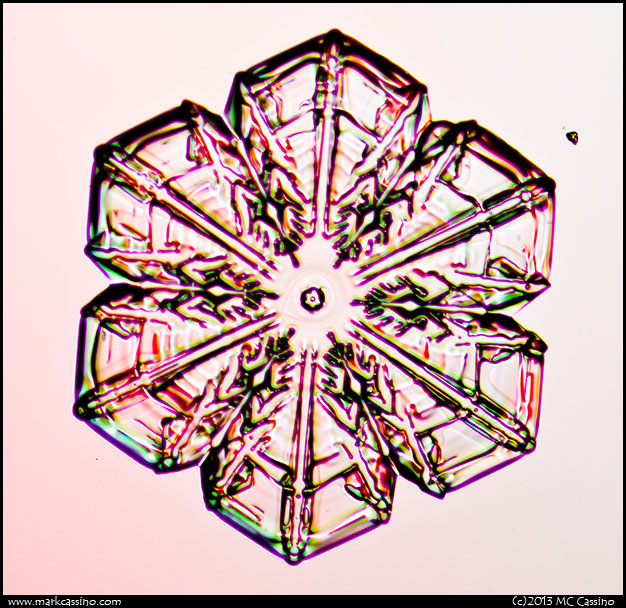The thing that gets me excited about the Q is not that it is a great do-it-all pocketable compact (because it isn’t) but rather that it is a great interchangeable lens KIT and I can carry a small bag and have tremendous capacity.
With that in mind, I wanted to come up with a macro setup that would compete with my DSLR / A* 200mm macro rig but be small enough to fit into a little camera bag. My choice for the macro lens was a Pentax SMC M50 f4 macro - a lens that I know to be remarkably sharp - on a generic Q to K mount adapter, and a Bolt VM-110 LED ring light (continuous light source.) I had to go with a continuous light source because the electronic shutter on the Q combined with a generic K to Q adapter will only flash synch at 1/13th of a second.
While the Pentax SMC M 50mm f4 macro lens is somewhat slow, I have used it in snow crystal photos in the past and know it to be remarkably sharp even wide open. It is also pretty small and light for a 50mm macro. Mounted on the Pentax Q it is the equivalent of a 275mm lens on a 35mm (a.k.a. full frame) system. The maximum magnification is only 1/2 life sized, but since the Q’s sensor is only about 1/4th of an inch across that still allows for some full frame photos of pretty small subjects…
The Bolt Ring light arrived earlier this week and I assembled the Q macro setup. Overall, it is a really sweet little outfit. Here is a photo of the Q, M50 & adapter, and Bolt ring light. While it is not tiny it certainly is quite compact:
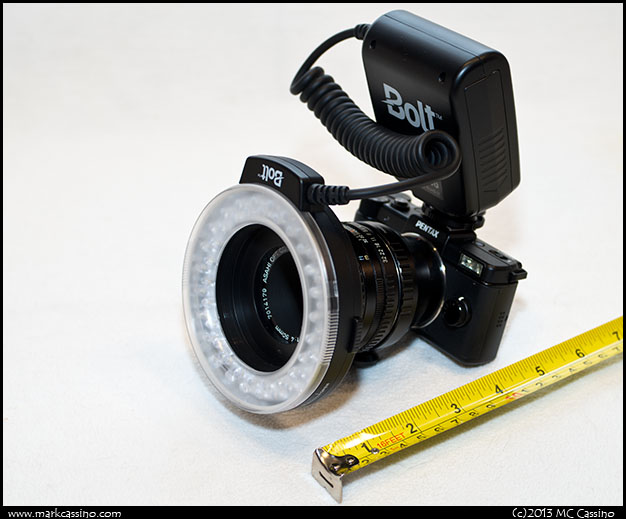
OK - On to test the setup. I fired up the Bolt light and did a few tests on a $20 bill. Here is a test at maximum magnification:
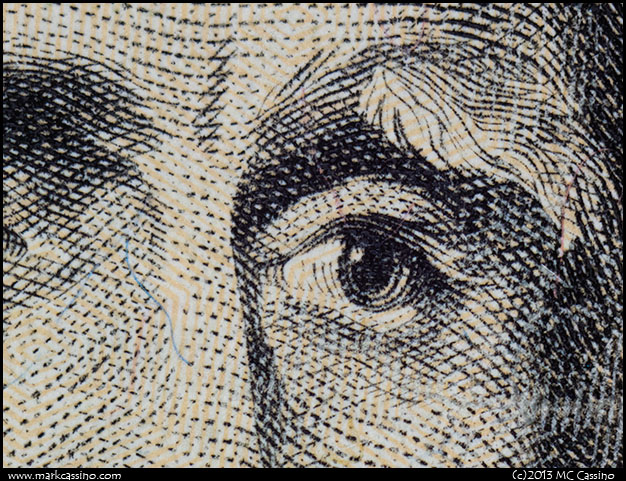
An actual pixel crop:
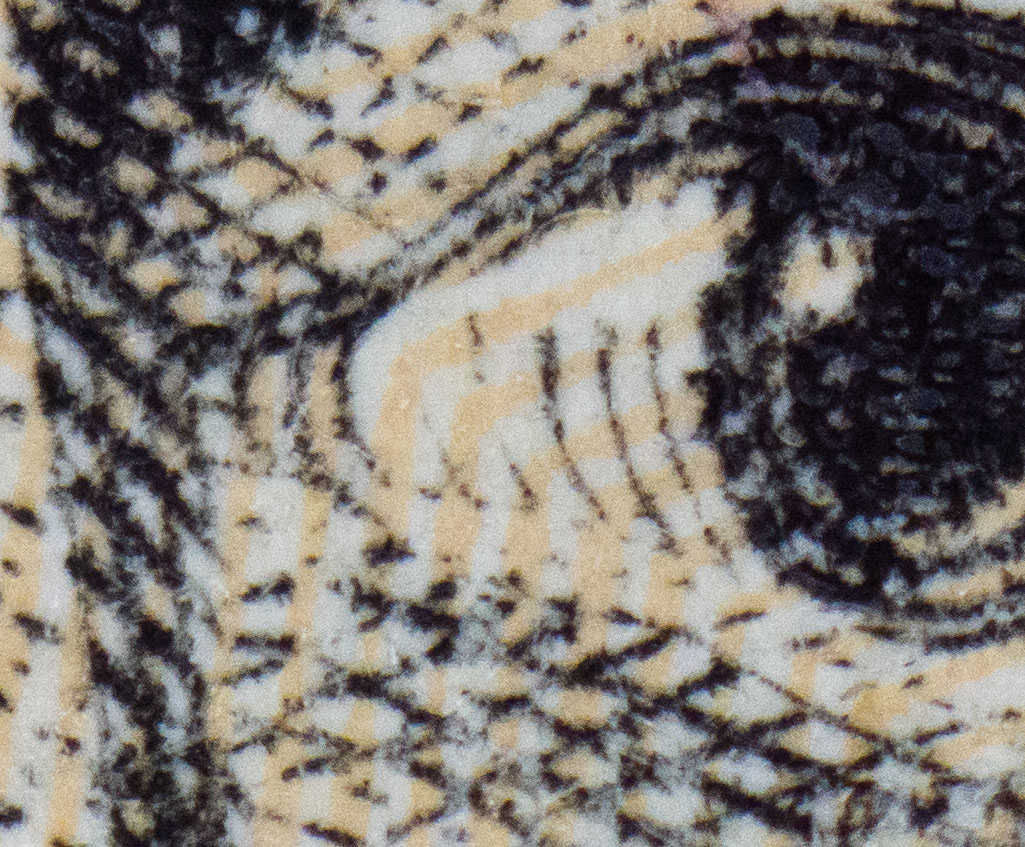
That image was taken with the front of the lens / ring light about 5 inches from the bill. The Bolt ring light kicked out enough light to allow hand holding of the camera at ISO 400.
So far so good. In reality, though, I don’t expect to take hand held macros of 1/2 inch items on a casual basis, so here is a more likely scenario - a shot taken with the front of the camera about 1 foot from the bill. Again, it looks good to me:
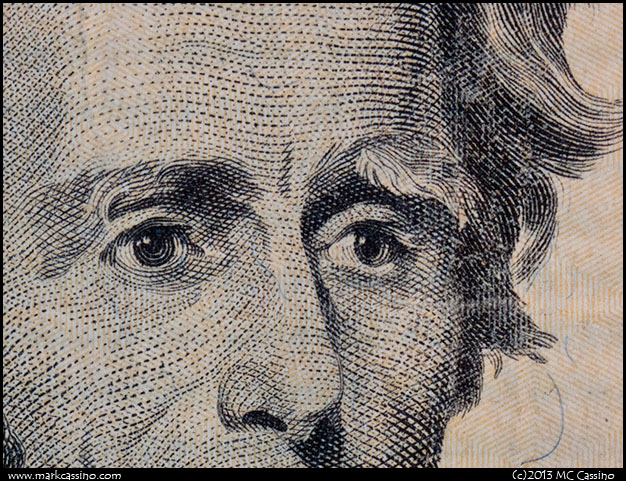
Again with an actual pixel crop:
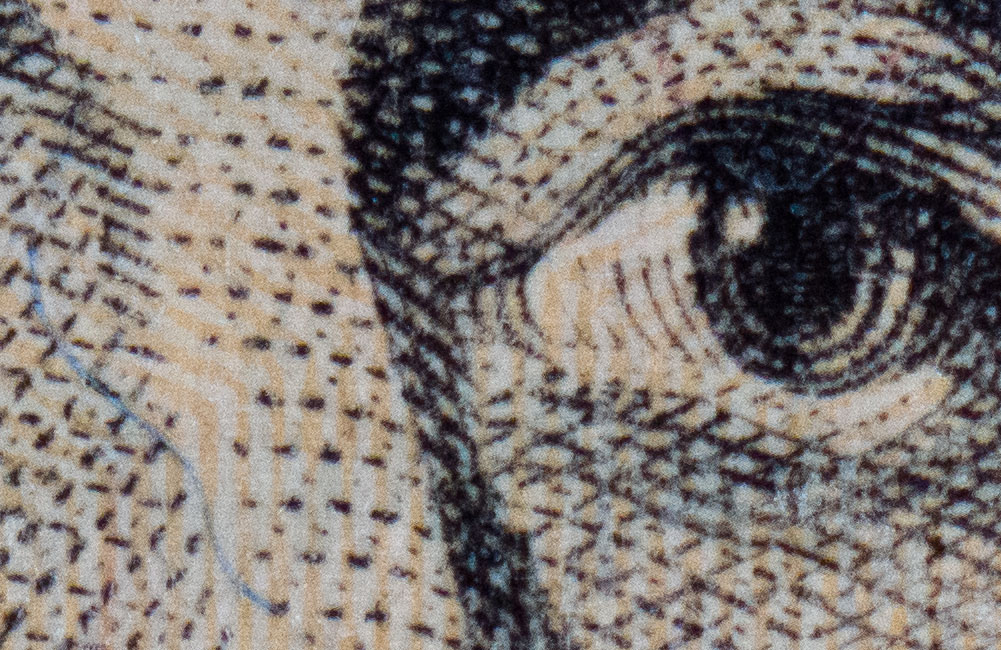
Now to try it in the real world…
We have had a late spring and the crocuses are just starting to bloom. The crocuses draw honey bees and my routine spring training involves going after the bees with my insect macro setup which hopefully gets me into shape for summer insect shooting. This spring I decided to try the Q setup…
Unfortunately, things did not go entirely as planned. I took a bunch of test shots, none of which were any good. But I immediately noticed weird artifacts popping up in the shots:
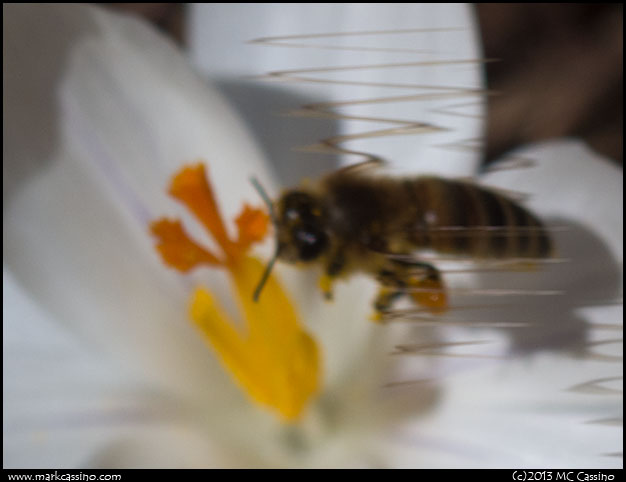
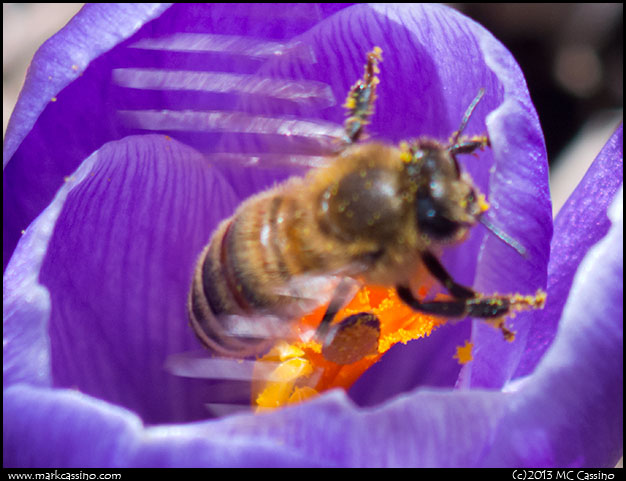
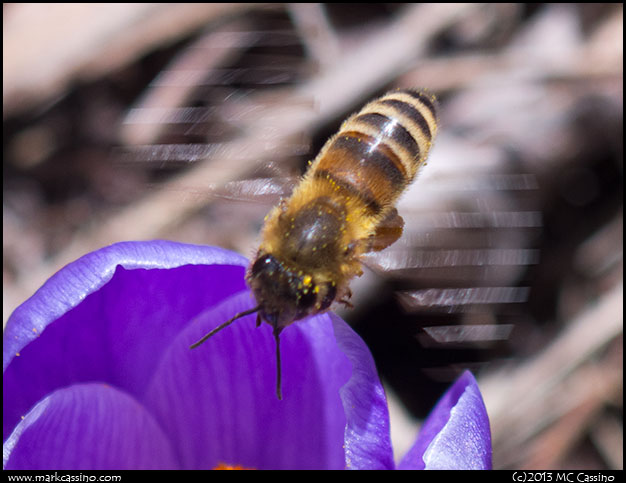
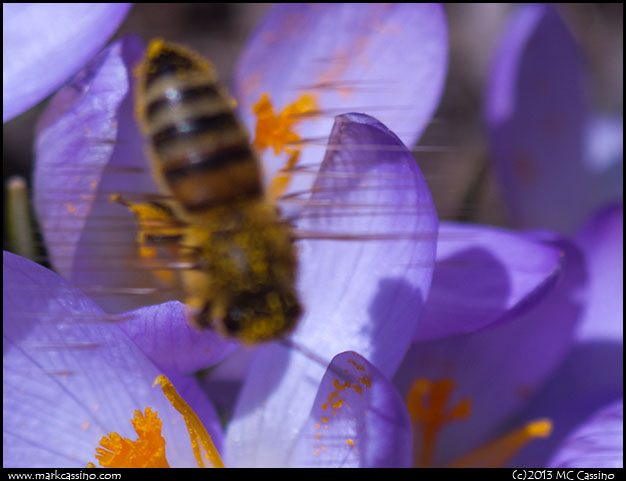
Arg… So this is the dreaded “rolling shutter distortion” I’ve heard about…
Here’s what’s going on: the Q does not have a physical shutter (i.e. - metal louvers that open and close to expose the sensor.) Most dedicated Q lenses have a leaf shutter built into the lens, but when using the Q to K adapter there is no shutter. In this case, the camera uses an “electronic shutter” where it turns the sensor on, reads the light levels, then turns it off. But it can’t do it all at once, so it turns on parts of the shutter sequentially. While it is still very fast, things like bee’s wings are faster and so they create distortion. You can read about this on Wikipedia.
So where does that leave me… I was quite excited about using the M50 macro on the Q. The native Q lenses are very impressive and versatile - the 01 is a fast normal prime, the 02 is a solid normal zoom (equivalent to a 28-85mm full frame zoom), the 03 fisheye is a very sharp ultra wide angle (17mm equivalent) and the 06 telephoto is a remarkably good telephoto zoom equivalent to 85 - 250mm).
The 50mm macro is a good idea and equivalent to a 275mm f4 macro, but falls short in the narrow category of flying insects. It still works great for taking pictures of $20 bills, flowers, and other stationary or slow moving items. Here are a few bees, and one fly, taken with the 50mm that illustrate that:
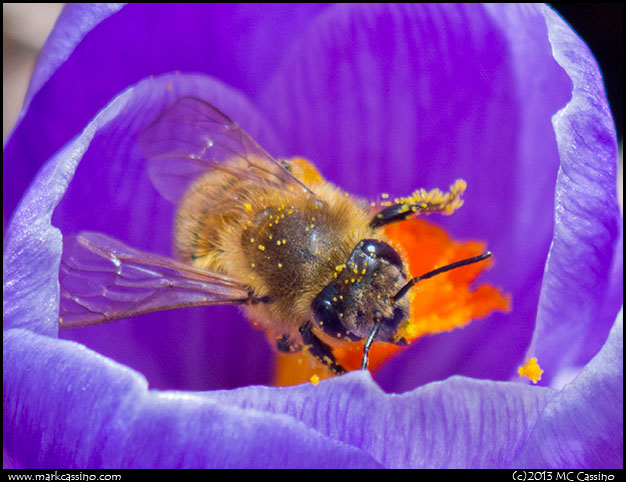
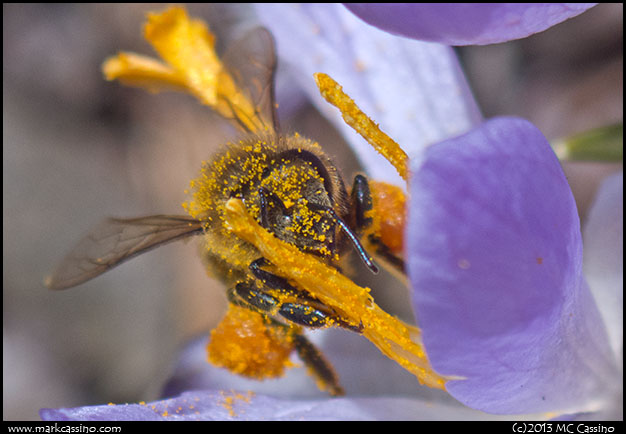
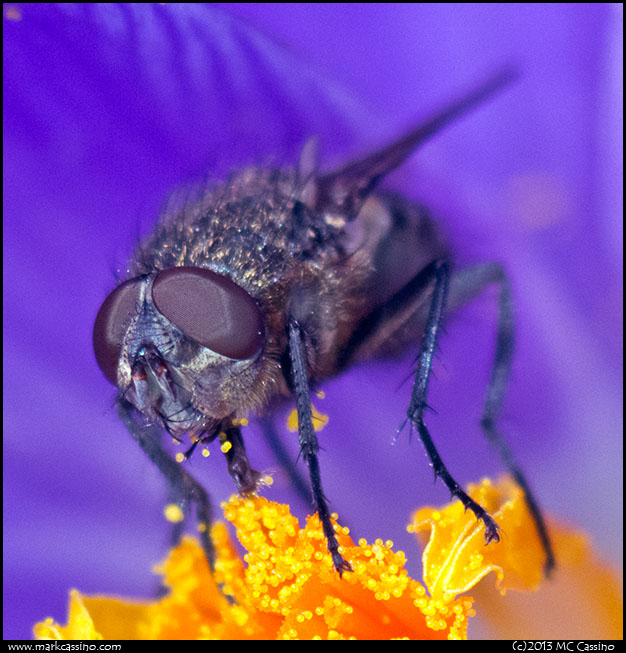
So for the next step I think I will try a Raynox 250 close-up adapter on the 06 telephoto zoom. It is not too expensive and would be generally useful on setups other than the Q. Alternately I might get the official Pentax Q to K adapter which has a built in shutter and would overcome the rolling shutter distortion - but would also require manually setting the shutter and shooting in TAv (ISO priority) mode.
Going back to my opening point about the Pentax Q (or Q10) - the beauty of this system is not that it is simply small but rather that it is versatile and small. My biggest frustration with DSLR’s (and before them film SLR’s) is that short of carrying a very hefty bag I could not tote a serious macro setup or broad range of lenses. To be able to cover everything from (in 35mm equivalents) 17mm to 275mm in one small bag, and to have the equivalent of a 275mm macro lens in that small bag is itself quite exciting. And while many online reviewers can’t get over the Q’s small sensor size. At lower ISO’s the output from the Q meets the most demanding standards, and at higher ISO’s it is fine for non technical applications. The small sensor size does mean that you are limited if you want shallow DOF, but if you are a macro shooter like me you will still be hungry for DOF in high magnification shots. In fact, given the image quality, the enhanced DOF from the small sensor, and compatibility with existing lenses, I’d expect the Q / Q10 (and beyond) to become a cult classic of serious macro photographers who also appreciate portability in their gear.
